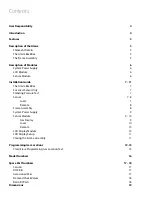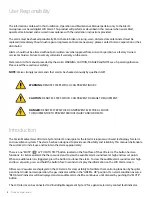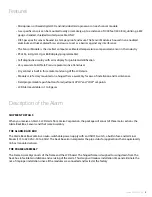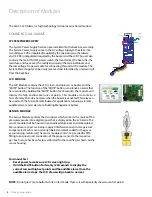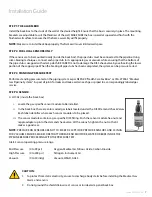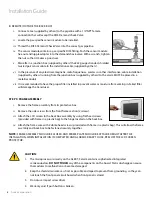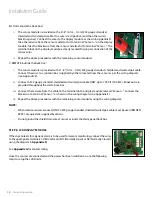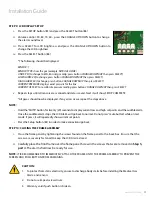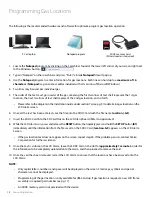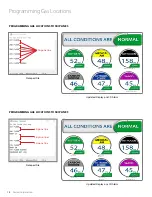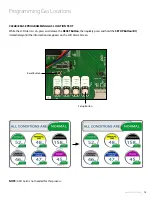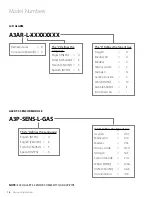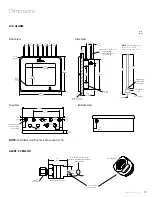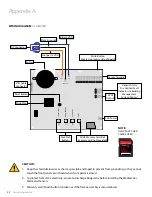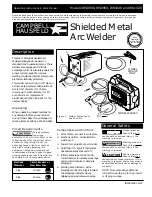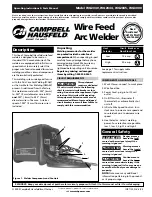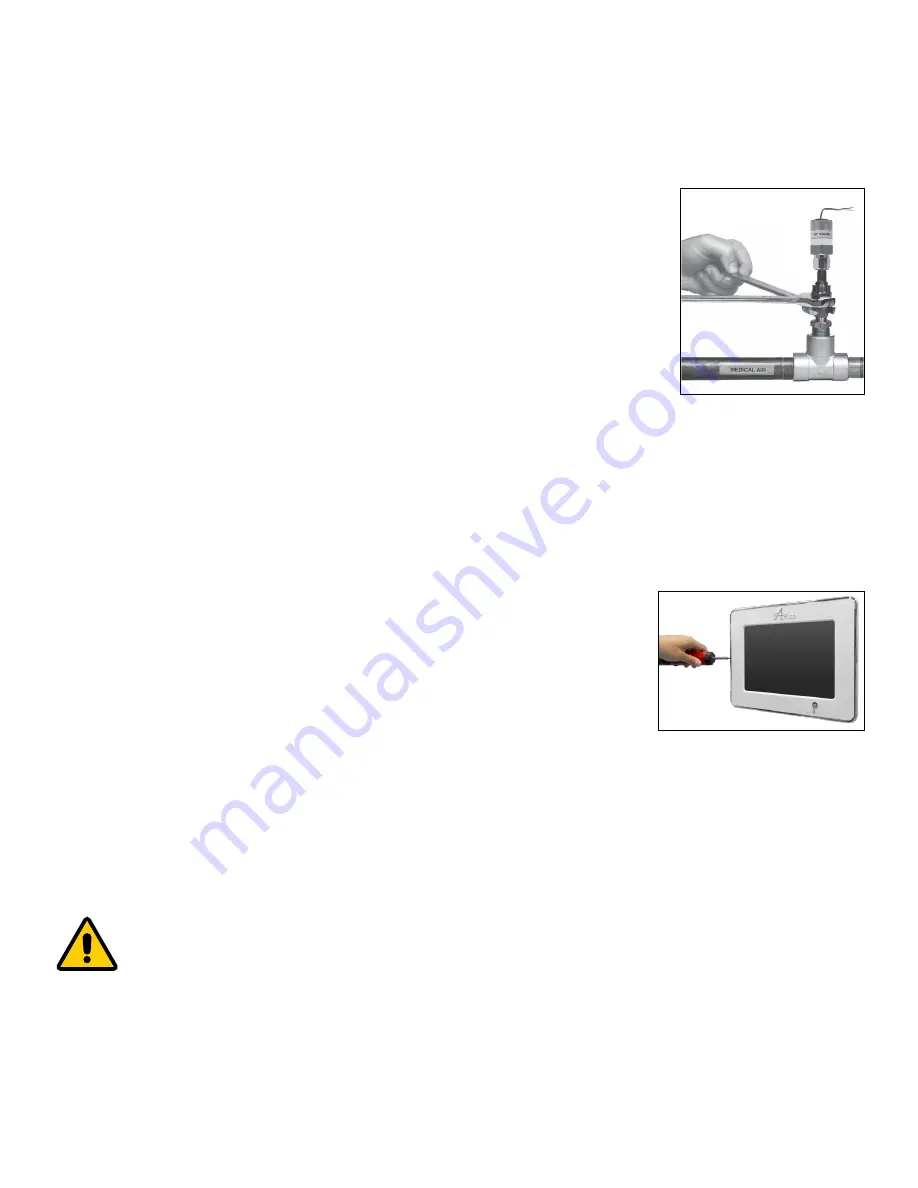
8
Amico Corporation
B: REMOTE (OUTSIDE THE BACK BOX)
i. Connect a tee (supplied by others) to the pipeline with a 1/4” NPT female
connection that will accept the DISS Demand Check Valve.
ii. Locate the gas-specific sensor module to be installed.
iii. Thread the DISS Demand Check Valve into the correct gas pipeline.
iv. The sensor module contains a gas-specific DISS fitting. Push the sensor module
hex-nut and nipple adapter into the demand check-valve. With a wrench, tighten
the nut so that it makes a good seal.
v. Marrette in a junction box (supplied by others) the #22 gauge stranded, shielded
twisted pair sensor cable to the installation cable (supplied by others).
vi. In the presence of any electrical, magnetic, radio frequencies, wireless or other interference, cable installation
(supplied by others) running from the junction box (supplied by others) to the alarm MUST be placed in a
metallic conduit.
vii. It is recommended to have the proper filter installed to prevent water or moisture from coming in. Failed filter
will damage the transducer.
STEP 5: FRAME ASSEMBLY
i. Remove the frame assembly from its protective box.
ii. Remove the side screws from the front frame section (2 screws).
iii. Attach the LCD screen to the back box assembly by using flat head screws
(provided with frame in a plastic bag) to the hinge located on the back box.
iv. Attach the frame wire with 2 dome head screws (provided with frame in a plastic bag). This will allow the frame
assembly and back box to be fastened securely together.
NOTE:
FRAME ASSEMBLY SHOULD BE CLOSED AND FRAME PLATE SHOULD BE ATTACHED RIGHT AFTER THE
INSTALLATION. WHEN INSTALLATION IS COMPLETED AND ALARM IS READY TO USE, PEEL OFF THE LCD SCREEN
PROTECTOR.
A m i c o M i c r o p r o c e s s o r B a s e d A l a r m
P a g e : 1 2
CAUTION:
The microprocessor circuitry on the ALERT-2 alarm con-
tains sophisticated integrated semiconductors. If it becomes necessary
to remove a module, PLEASE hold the boards by the edges.
DO NOT
TOUCH
any of the components on the board. Static discharge can
cause the modules to malfunction, or become damaged.
SENSOR
LOCAL (In the Back Box)
1.
Locate the gas specific
sensor module to be in-
stalled.
2.
In the back box, there are
colour coded gas labels
located under the DISS
Demand check valves. Each
label identifies where each
sensor module is to be
placed.
3.
The sensor module contains
a gas specific DISS fitting.
Push the sensor module
hex-nut and nipple adapter
up into the demand check-
valve. With a wrench, tighten the nut so that it makes a good seal.
NOTE: Pressure on sensors are not to exceed
250psi
for Pressure sensors and
30”
for Vacuum sensors
REMOTE (Outside the Back Box)
1.
Connect a Tee (supplied
by others) to the pipeline
with a 1/4" NPT female
connection that will accept
the DISS Demand check-
valve.
2.
Locate the gas specific
sensor module to be
installed.
3.
Thread the DISS Demand
check-valve into the
correct gas pipe line.
4.
The sensor module contains a gas specific DISS fitting. Push the
sensor module hex-nut and nipple adapter up into the demand
check-valve. With a wrench, tighten the nut so that it makes a
good seal.
CAUTION:
1. The microprocessor circuitry on the ALERT-3 alarm contains sophisticated integrated
semiconductors.
DO NOT TOUCH
any of the components on the board. Static discharge can cause
the modules to malfunction or become damaged.
2. Keep the shield drain wires as short as possible and taped to prevent from grounding, so they can
not touch the front panel circuit board when front panel is closed.
3. Do not use impact screw driver.
4. Warranty void if push button is broken.
Installation Guide


